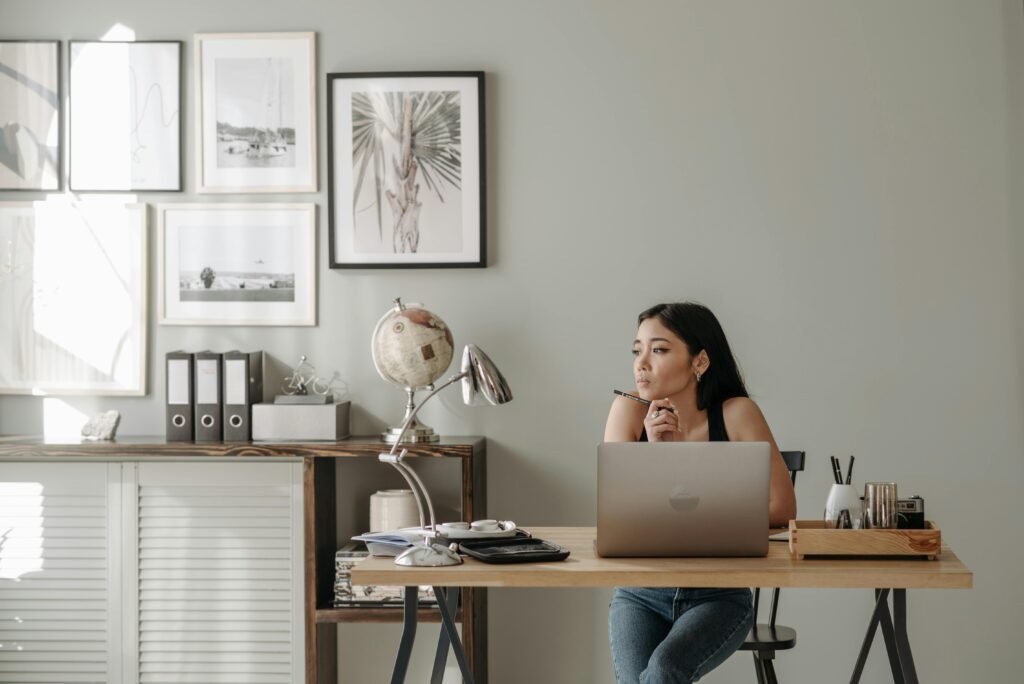
Ergonomic Essentials: Setting Up Your Home Office for Comfort
Creating an ergonomic home office setup is paramount for enhancing comfort and efficiency. A well-arranged home office not only mitigates physical discomfort but also boosts productivity. The cornerstone of such a setup is ergonomic furniture, specifically chairs with proper lumbar support. Investing in a chair that offers adjustable height, seat depth, and backrest can significantly reduce the risk of developing back and neck pain. Opt for chairs with lumbar support to maintain the natural curve of your spine.
Adjustable desks play a crucial role in an ergonomic home office. These desks, whether sit-stand or height-adjustable, allow users to alternate between sitting and standing positions, promoting better posture and reducing the adverse effects of prolonged sitting. Position your desk so that your elbows form a 90-degree angle when typing, ensuring that your forearms are parallel to the floor.
Monitor stands are indispensable for reducing eye strain and neck pain. Place monitors at eye level, keeping the top of the screen at or slightly below eye height. This positioning minimizes the need to tilt your head forward or backward, thus maintaining neutral neck alignment. The recommended distance from your eyes to the monitor is about an arm’s length, typically between 20-30 inches.
Proper posture is essential in an ergonomic setup. Sit with your feet flat on the floor and knees at a right angle. This position helps distribute body weight evenly, alleviating pressure on the lower back and hips. Utilize footrests if your feet do not comfortably reach the floor.
Lighting is another critical factor. Ensure that your workspace is well-lit to reduce eye strain. Natural light is preferable, but where it is insufficient, consider adjustable LED desk lamps. Position light sources to avoid glare on your screens.
Conducting an ergonomic assessment of your workspace is a proactive step towards comfort. Evaluate each component’s placement and adjust as necessary. Several ergonomic assessment tools are available online, providing personalized recommendations based on your specific needs. Products like ergonomic footrests, wrist rests, and monitor arms can further enhance comfort and productivity.
Real-life examples amplify the importance of these adjustments. Remote workers have often cited significant reductions in physical discomfort and enhancements in work efficiency after optimizing their workspaces. For instance, Jane, a remote software developer, reported a 50% decrease in her back pain after investing in an ergonomic chair and adjustable desk.
Optimizing Workspace Efficiency: Organization and Design Tips
Designing a home office for maximum efficiency and productivity starts with a keen focus on organization and thoughtful design. The first step in creating an efficient workspace involves decluttering and organizing. A clutter-free workspace not only minimizes distractions but also enhances focus and productivity. Consider implementing smart storage solutions such as vertical shelving, drawer organizers, and file cabinets to keep essential items within reach but out of sight. Incorporating cable management systems can significantly reduce the chaos of tangled wires, contributing to a cleaner and more orderly environment.
Strategic placement of work tools is another crucial aspect. Position your computer and other frequently used equipment within ergonomic reach to reduce strain. Using a dedicated desk and ergonomic chair designed to support proper posture can also prevent discomfort during long working hours. Designating specific zones for different activities, such as a separate area for reading or brainstorming, can further boost efficiency and creativity.
Creating an inspiring workspace goes beyond mere organization; it encompasses thoughtful design choices that foster creativity and concentration. Selecting an appropriate color scheme can profoundly impact your mood and productivity. Neutral tones, such as whites and grays, create a calming environment, while subtle accents of blue or green can inspire creativity. Incorporating elements of nature, like potted plants or natural light, can also enhance your workspace’s ambiance and provide a refreshing break from screen time.
Personalizing your workspace to reflect your individual tastes and work style is also essential. Displaying motivational quotes, artwork, or personal photographs can create an environment that feels uniquely yours and contributes to your overall well-being. Keeping up-to-date with the latest trends in office ergonomics and remote work culture, such as standing desks and flexible working setups, can also help you optimize your home office for the future.
By implementing these organization and design tips, you can create a home office that not only enhances efficiency and productivity but also inspires and motivates you to perform at your best.





